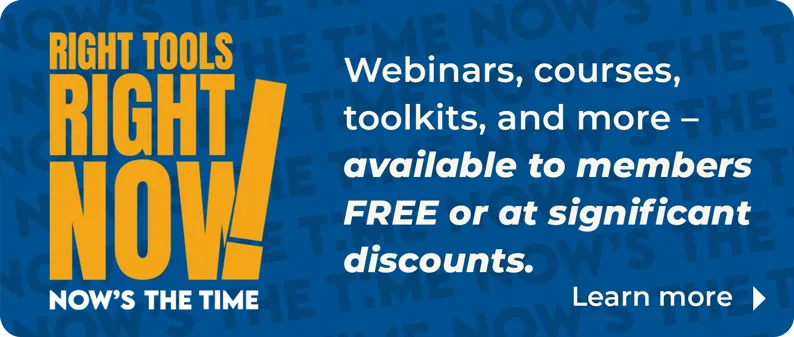The National Association of REALTORS® has been producing the Profile of Home Buyers and Sellers since 1981. Each report is conducted in a unique economic environment and in an ever-changing real estate market. These were the most striking takeaways from this year's report on who can enter the housing market, which has been plagued by unaffordability and limited inventory.
1. First-time buyers
First-time home buyers dropped to the lowest historical share since data collection began in 1981, dropping to just 21%. First-time buyers faced limited inventory, continued erosion of housing affordability, and difficulty saving for a down payment. Before the Great Recession, it was the norm in the primary residence housing market for 40% of home buyers to be first-time buyers. The most difficult step, even among successful first-time buyers, was just finding the right property. Additionally, this year's successful first-time buyers cited high rent, student debt, credit card debt, and car loans as debts that held them back from saving.
2. Age of first-time buyers
While the share of first-time buyers dropped to the lowest share recorded, the age of first-time buyers jumped to the highest recorded, at 40 years old. Since 2010, the age of first-time buyers has been incrementally climbing from age 30. First-time home buyers are older, likely because they have to save for longer periods and face a market with limited inventory, where they may have to search longer to find a home.
3. Age of repeat buyers
The age of repeat buyers has also hit an all-time high. In 1981, the median age of repeat buyers was 36. Today it is 62. Repeat buyers who are deciding to purchase are making moves later in life, perhaps in retirement. The lock-in effect of low-rate mortgages may be keeping younger homeowners in place.
4. Children
Another notable demographic change is the share of buyers who have children under the age of 18 in the home. The share has dropped to a historic low of 24% of buyers, from a high of 58% in 1985. This shift is likely due to a higher share of repeat buyers (with a median age of 62 this year), an overall drop in birth rates, and people having children later in life. Additionally, for parents who had difficulty saving for a down payment, 21% cited child care costs as a hurdle to saving. Among first-time buyers, 32% had children under 18; and among repeat buyers, 22% did. This change does mean a difference in neighborhood amenities and could potentially change how often a buyer moves (e.g., if they would move with a growing family or as an empty nester).
5. Down payment amount
In 2025, the down payment was the highest for first-time buyers since 1989 and for repeat buyers since 2003. As homeowners continue to be the winners in today's market, they have gained housing equity and can place larger down payments on their next home. For all home buyers, a larger down payment helps offset the mortgage interest rate and results in a lower monthly payment.
6. Source of down payment
For the first time, first-time buyers are more likely to use financial assets than assistance from friends or family for their down payment. This is most likely because first-time buyers are now older and are more likely to have financial assets to use. Inheritances have hit an all-time high among first-time buyers as well.
7. All-cash home buyers
All-cash home buyers remained at an all-time high this year at 26%. It is important to note that the data collected is among primary residence buyers only—not vacation home buyers or investors. For repeat buyers, they have built housing equity in the home and can make the next purchase, perhaps in retirement, without financing. For first-time buyers, the question is more about how much exists in their down payment sources.
8. Length of ownership
Home sellers have now owned their home for a median of 11 years before selling. This is an all-time high. The lock-in effect of low-interest-rate mortgages is likely playing a role in the increase in home tenure. If a homeowner lacks a motivating factor to move, they may stay put longer.
9. Buyer use of agents
Eighty-eight percent of home buyers used a real estate agent or broker to purchase their home. Buyers want a real estate agent or broker who is not only able to help them find the right home but is also going to help them negotiate, explain, and understand the real estate market. This is the biggest financial purchase of one's life, and real estate agents are wanted and used by home buyers to help achieve the American dream.
10. Seller use of agents
Ninety-one percent of home sellers used a real estate agent or broker to sell their home. Similarly, home sellers want an agent to help them market their home for sale, price it competitively, and sell it within a specific time frame. Buyers and sellers were happy with their agent and would recommend or use them again when buying or selling a home. For-sale-by-owners (FSBO) dropped to a historic low of just 5% of sellers. Sixty percent of FSBOs knew the buyer of their home.
To find your favorite statistic, get the Highlights from the Profile of Home Buyers and Sellers or buy the full report from the REALTOR® Store.


















